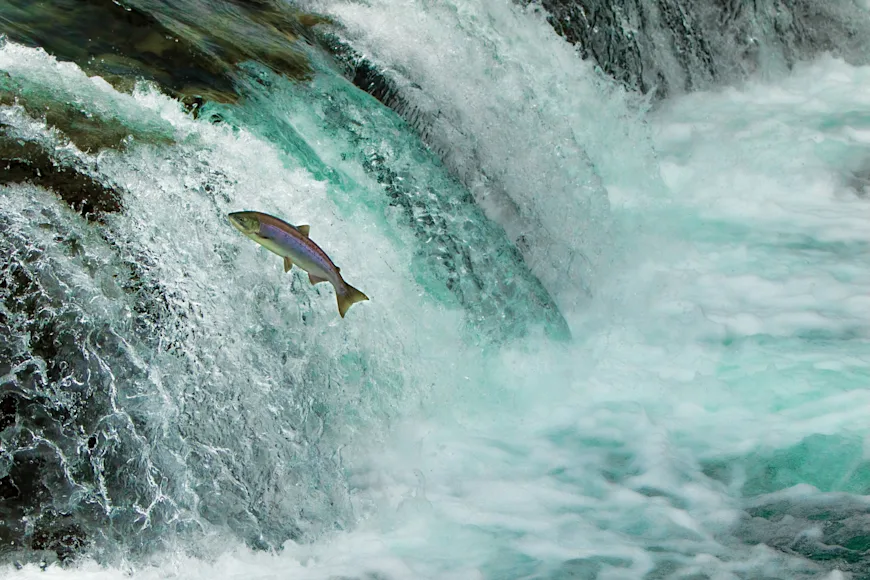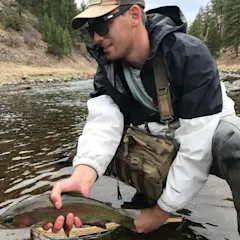Recent radio monitoring shows that chinook salmon have reached stretches of the Upper Klamath River Basin—an area that anadromous fish have been absent from for over a century, according to a press release from the Oregon Department of Fish & Wildlife (ODFW). The news is an indication that dam removal efforts on the Klamath River are working as expected.
The Klamath is a 263-mile river that flows through the Cascade Mountains in southern Oregon and northern California. According to NOAA Fisheries, the river was once the third largest salmon-producing river on the West Coast, not to mention a famous steelhead fishery. But those anadromous fish runs suffered in large part from four hydroelectric dams that impacted water quality and impeded fish passage. Years of advocacy from a variety of stakeholders, including local Indigenous tribes, led to America's largest dam removal; those four dams were demolished by September, 2024.
Since then, scientists and conservationists have eagerly awaited signs that the effort is paying off. Water quality and temperature soon improved and this October, they detected chinook salmon on the Williamson and Sprague Rivers—tributaries in the upper Klamath Basin that haven’t recorded salmon reproduction in over 100 years.
“The run so far this year has been incredibly exciting and we're expanding our monitoring program on an almost daily basis to keep adapting," said ODFW Klamath fisheries reintroduction project leader Mark Hereford. "It is incredible to be a part of this historic return and see where these salmon go and what they do."
Chrysten Rivard, VP of Pacific Conservation for Trout Unlimited (TU), echoes Hereford’s sentiments. “One of the objectives of the dam removals was for native migratory fish, particularly salmon and steelhead, to be able to reoccupy all of their historic territories,” she tells Field & Stream. “To see fall chinook make it into those tributaries in somewhat significant numbers is incredibly exciting.”
Next, scientists hope to see future fall chinook runs in the basin increase because of the expanded spawning habitat. They’re also hoping to see similar results for runs of steelhead, coho salmon, and spring chinook. One reason the dam removal project is bearing fruit so quickly is the years of restoration work on Klamath headwater streams led by TU in partnership with tribes, agencies, and other NGOs that predated the dam removal.
Rivard says that the recent monitoring news is an indication of the broader effectiveness of dam removals in aiding anadromous fish runs, calling it “easily the most exciting thing I've witnessed in my career.”
Read Next: NOAA Cuts Threaten Critical Salmon and Steelhead Restoration Work
“This is a story about how diverse communities can come together—tribal-led coalitions, organizations, and irrigators—to make this project successful,” she says. “I’ve worked for nearly two decades on the recovery of these fish. It’s been many years of work on the hope that the fish would recover. Now, we’re witnessing them undertake that recovery.”


